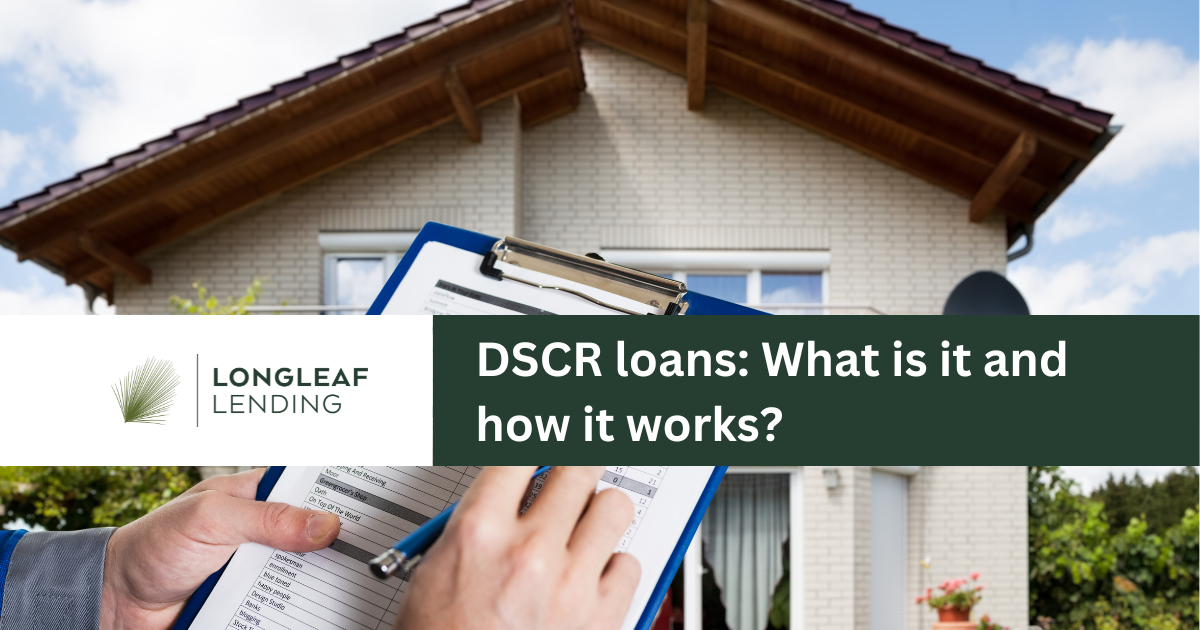
DSCR loans: What is it and how it works?
DSCR is probably a term that keeps popping into your radar these days. It’s expected as DSCR Loans are quickly becoming a popular, go-to loan option for real estate investors looking to grow their rental portfolios. If you are still a little unclear about what DSCR is, the purpose of DSCR loans, and whom they are meant for, in this article we will discuss and demystify this topic once and for all.
What is a DSCR loan?
A DSCR loan, or Debt-Service Coverage Ratio loan, is a specialized form of mortgage tailored for residential income-producing properties. Unlike conventional mortgages, which heavily weigh borrower income and debt-to-income ratios, DSCR loans shift the focus to the property's cash flow and financial performance.
The critical factor in a DSCR loan is the Debt-Service Coverage Ratio, calculated by dividing the property's net operating income by its total debt service.
The critical factor in a DSCR loan is the Debt-Service Coverage Ratio, calculated by dividing the property's net operating income by its total debt service.
What is DSCR?
DSCR stands for Debt Service Coverage Ratio. This ratio serves as a gauge for lenders to assess your ability to repay your debt. By analyzing this ratio, lenders can determine the amount of funds you have available to cover your debt obligations. This information plays a pivotal role in the lender's decision-making process when considering loan requests or refinancing existing loans.
To calculate DSCR, divide the property's revenue by its associated expenses. A Debt-Service Coverage Ratio (DSCR) of 1.00x indicates a property that is essentially "breaking even," where the revenue matches the expenses. If the DSCR ratio surpasses 1.00x, it signifies that the property is "cash flowing," indicating a surplus of revenue after covering expenses. Conversely, a DSCR ratio falling below 1.00x indicates that the property is operating at a monthly loss.
To calculate DSCR, divide the property's revenue by its associated expenses. A Debt-Service Coverage Ratio (DSCR) of 1.00x indicates a property that is essentially "breaking even," where the revenue matches the expenses. If the DSCR ratio surpasses 1.00x, it signifies that the property is "cash flowing," indicating a surplus of revenue after covering expenses. Conversely, a DSCR ratio falling below 1.00x indicates that the property is operating at a monthly loss.
To look at it simply, DSCR is the ratio between the income generated for every $1 owed to the lender. For instance, a DSCR of 1.5x indicates that the asset generates $1.50 for every $1 owed.
Here’s one more example:
Using the DSCR formula: rent/PITIA where:
- Rent is the monthly rental income of the property
- PITIA is the sum of Principal and Interest, Taxes, Insurance, and Homeowner Association dues.
Total monthly income: $3,000
Total monthly PITIA: $1,900
DSCR: 1.5x
Most lenders would consider 1.25 and above as good DSCR as it means the property is generating a profit of 25% or more than its expenses. This reflects a good cash flow as long as the property continues to be occupied on a monthly basis.
Please take note though that each lender may differ slightly in the way they compute DSCR, so it is best to inquire from the lender before taking out a DSCR loan.
How do DSCR loans work?
DSCR serves as a crucial indicator of whether a real estate property generates sufficient income to cover its loan obligations. When a real estate investor seeks a new loan or looks to refinance an existing one, the lender will evaluate the DSCR as a key factor in determining eligibility.
The DSCR loan is specifically crafted for real estate investors aiming to qualify for financing based on the cash flow generated by their rental properties, eliminating the need for traditional income verification methods such as tax returns or employment details.
This unique approach streamlines the financing process, providing quicker access to capital without the prolonged documentation requirements. Essentially, with a DSCR loan, you can secure financing based on the property's performance, bypassing the traditional hurdles associated with income proof.
Why is DSCR loan popular with real estate investors?
Less documentation and paperwork required
DSCR loans offer a sigh of relief for real estate investors ready to leave behind the traditional demands of income verification and stringent documentation. This freedom from W2 headaches provides investors with the flexibility they need to scale and manage multiple income-producing properties.
Conventional financing often involves a plethora of paperwork and bureaucratic hurdles. DSCR loans, designed with real estate investors in mind, cut down on the administrative hassle, allowing investors to focus more on their investment strategy and less on paperwork.
Ideal for Scaling Portfolios
For real estate investors looking to expand their portfolios rapidly, DSCR loans provide a strategic financing solution. The flexibility and efficiency offered by this loan enable investors to grab new opportunities without the red tape associated with traditional financing.
Unlike a traditional mortgage, which typically restricts you to financing a single property at a time, a DSCR loan offers the flexibility to secure multiple loans concurrently, up to your exposure limit.
Cash-out refinancing options
Most DSCR loan programs offer additional features such as flexible rates, varied durations, and opportunities for cash-out refinancing. In certain situations, opting for a DSCR loan might enable you to withdraw a bigger amount from an investment property compared to what you would get with a traditional loan. This extra flexibility in accessing equity could allow you to fund the purchase of your next property.
At Longleaf Lending, we offer long-term rental loans underwritten using DSCR. Talk to us today on how we can help you scale your rental investment portfolio. We’d be happy to help!
